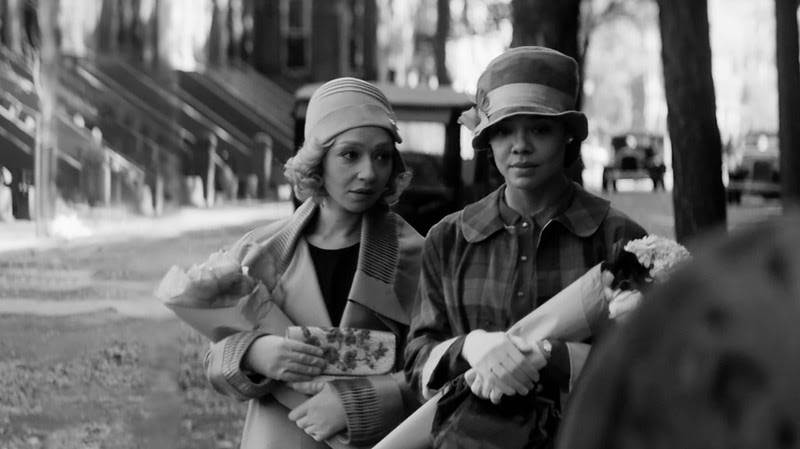We tend to think of the “Roaring 20’s” as being particularly glamorous, full of art deco buildings, flapper girls, and all things Gatsby. While F. Scott Fitzgerald’s novel has become synonymous with the times, the realities of being Black during the era is better represented in Nella Larsen’s 1929 novel, Passing. Adapted for the screen by Rebecca Hall in her directorial debut, the Sundance Film Festival premiere allowed the societal complexities of the era to come to light.
The title refers to fair-skinned Black persons who could “Pass” for white, which is what Irene Redfield (Tessa Thompson) is doing at the start of the film. Escaping the heat, she enters a ritzy hotel’s tea lounge where a blonde woman ends up being an old high school friend, Clare Kendry (Ruth Negga). Upon reconnecting, they have mixed reactions to the way the other has chosen to live with their ability to mask their skin tone.
Irene lives in Harlem with her Black doctor husband (André Holland) and their two sons, volunteering her free time to organize community events. Clare married a white man named Jack (Alexander Skarsgård), who proves himself to be deeply racist upon Irene’s one encounter with him. And although their reconnection was fleeting, Clare continuously writes Irene and eventually forces her way into her life, realizing how much she has missed the identity she left behind long ago.
While not exactly a psychological thriller, the film gives you a lot to think about without being over with its themes. In addition to racial identity and societal racism, subtext includes themes of sexuality questioning, infidelity and jealousy. At times, the story felt like it was heading in a The Hand That Rocks the Cradle direction, but it never gets that twisted.
One of the things Passing brilliantly does is shooting the picture as if it was made in the 1920’s or 30’s. Filmed in black and white and a 4:3 aspect ratio, the lens focus is never so sharp that it feels like it was made today, although it also never adds excessive grain or noise, striking a balance somewhere in between. Camera moves rarely achieve shots that wouldn’t have been possible at the time either, save for just a few exceptions to the rule. If you randomly caught it on TCM, you’d have a hard time placing exactly when it was made. Even the sound design heightens elements for dramatic effect.
Passing is the type of film that sits with you long after the credits roll. It makes a few obvious statements, but leaves you with a lot of questions to digest and themes to ponder. Like life itself, there are no easy or straightforward answers and that's just part of the picture’s charm. The ending, as written in 1929, is both shocking and somewhat unsatisfying, but also the kind that makes films like this become a cult classic.
I give Passing 4 out of 5 stars.

